The Fellows Scholarship awards $50,000, $25,000 and $10,000 scholarships to extraordinary young people, 18 and under, who have completed a significant piece of work. Application categories are Science, Technology, Engineering, Mathematics, Literature, Music, Philosophy and Outside the Box.
The class of 2022 Fellows included many who developed research related to making an impact on the environment and bettering peoples’ lives. These projects are highlighted below.
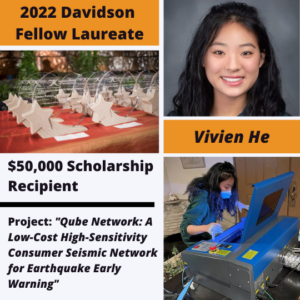 Vivien He received a $50,000 scholarship for inventing a device called the Qube, which can give people time to take action before strong shaking, and also enable automated responses (shutting off gas lines, stopping trains, etc.), which can save lives and reduce the damage caused by earthquakes.
Vivien He received a $50,000 scholarship for inventing a device called the Qube, which can give people time to take action before strong shaking, and also enable automated responses (shutting off gas lines, stopping trains, etc.), which can save lives and reduce the damage caused by earthquakes.
Read more about Vivien’s project >
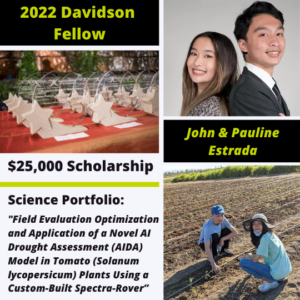 John & Pauline Estrada received a $25,000 scholarship for their model on water conservation, which is able to predict drought stress on tomato plants in California. These predictions will allow for more proficient use of water resources and may be able to save close to 26 billion gallons of water.
John & Pauline Estrada received a $25,000 scholarship for their model on water conservation, which is able to predict drought stress on tomato plants in California. These predictions will allow for more proficient use of water resources and may be able to save close to 26 billion gallons of water.
Read more about their project >
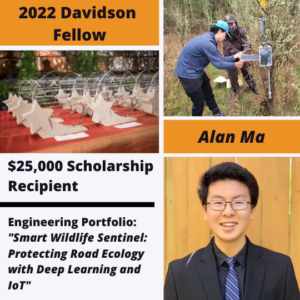 Alan Ma received a $25,000 scholarship for developing a smart ecological sentinel that can prevent wildlife-vehicle collisions by warning drivers early of detected animal presence and also monitors wildlife activity. This solution can protect human and wildlife lives, and bolster current wildlife conservation efforts.
Alan Ma received a $25,000 scholarship for developing a smart ecological sentinel that can prevent wildlife-vehicle collisions by warning drivers early of detected animal presence and also monitors wildlife activity. This solution can protect human and wildlife lives, and bolster current wildlife conservation efforts.
Read more about Alan’s project >
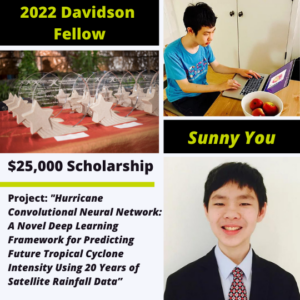 Sunny You received a $25,000 scholarship for his science portfolio, which provides the potential to dramatically improve the accuracy of hurricane intensity forecasts, especially on major hurricanes and intensifying storms which are the most threatening to coastal communities.
Sunny You received a $25,000 scholarship for his science portfolio, which provides the potential to dramatically improve the accuracy of hurricane intensity forecasts, especially on major hurricanes and intensifying storms which are the most threatening to coastal communities.
Read more about Sunny’s project >
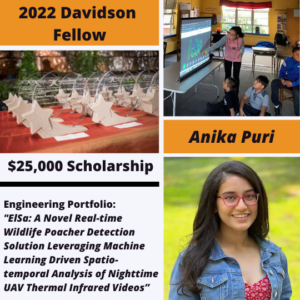 Anika Puri received a $25,000 scholarship for creating an algorithm that detects potential animal poachers with over 90% accuracy. Her research is able to detect poachers in nighttime, infrared videos from more than 500 feet off the ground with 4X higher accuracy than the current state-of-the-art solutions.
Anika Puri received a $25,000 scholarship for creating an algorithm that detects potential animal poachers with over 90% accuracy. Her research is able to detect poachers in nighttime, infrared videos from more than 500 feet off the ground with 4X higher accuracy than the current state-of-the-art solutions.
Read more about Anika’s project >
See also:
Comments